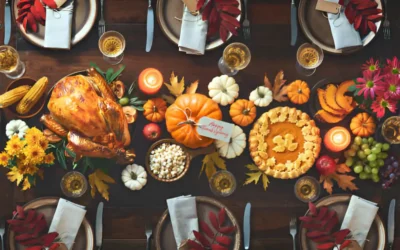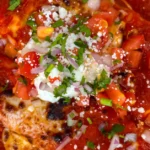Let me tell you a little secret – I used to be terrified of cooking ribs. The first time I tried, they came out tough as leather, and I nearly gave up on ever making them again. But after countless attempts and plenty of tasty experiments, I’ve cracked the code to making incredibly tender boneless ribs in the oven. Today, I’m sharing everything I’ve learned to help you nail it on your first try.
Quick Answer
If you’re in a hurry, here’s what you need to know: Cook boneless pork ribs in the oven at 275°F (135°C) for about 2-2.5 hours, or until they reach an internal temperature of 190-200°F (88-93°C) for that perfect fall-apart tenderness.
The Perfect Timeline for Oven-Baked Boneless Ribs
| Cooking Temperature | Approximate Time | Result |
| 275°F (135°C) | 2-2.5 hours | Fall-apart tender |
| 300°F (149°C) | 1.5-2 hours | Tender with more bite |
| 350°F (177°C) | 1-1.5 hours | Firmer texture |
What You’ll Need
Before we dive into the cooking process, let’s gather our equipment:
• Baking dish or roasting pan
• Aluminum foil
• Meat thermometer
• Sharp knife
• Mixing bowls for seasonings
• Paper towels
The Step-by-Step Process
1. Preparation (30 minutes before cooking)
I’ve learned that proper prep is crucial for perfect ribs. Here’s what you need to do:
• Remove ribs from refrigerator 30 minutes before cooking
• Pat them dry with paper towels (this helps the seasoning stick better)
• Remove any excess fat, but leave some for flavor
• Apply your favorite dry rub or simple salt and pepper
Pro tip: I like to score the fatty side in a diamond pattern – it helps the fat render and allows the seasonings to penetrate better.
2. Initial Oven Setup
Preheat your oven to 275°F (135°C). This lower temperature is key for breaking down the tough connective tissues while keeping the meat moist.
3. The Cooking Process
First Phase (1.5 hours)
• Place the ribs in your baking dish, fatty side up
• Cover tightly with foil
• Bake for 1.5 hours undisturbed
Second Phase (30-60 minutes)
• Remove foil
• Brush with your favorite BBQ sauce or glaze
• Continue cooking uncovered until internal temperature reaches 190-200°F
How to Know When They’re Done
Let me walk you through the three foolproof methods I use to check if boneless ribs are perfectly cooked. After years of making ribs, I’ve found that using a combination of these tests gives you the most reliable results.
1. Temperature Test: The Scientific Approach
This is hands-down the most accurate method, and I never cook ribs without my trusty meat thermometer. Here’s how to do it right:
• Insert a digital meat thermometer into the thickest part of the meat
• Avoid touching bone or large fat deposits, as these can give false readings
• Look for an internal temperature of 190-200°F (88-93°C)
• Check multiple spots, especially if your ribs are uneven in thickness
• Wait for the temperature reading to stabilize (about 10 seconds)
Pro tip: While 145°F is technically “safe” to eat, you want to go much higher for ribs. The extra cooking time allows the tough collagen to break down into gelatin, giving you that melt-in-your-mouth texture.
2. Bend Test: The Professional’s Method
This is the test you’ll see pitmasters use at BBQ competitions. Here’s how to master it:
1. Pick up the rack of ribs with tongs, holding them at one end
2. Lift gently and observe how the rack bends:
• Perfect doneness: The rack should develop a crack in the crust and bend about 45 degrees before starting to break
• Undercooked: The rack will be stiff and barely bend
• Overcooked: The meat will completely fall apart
Warning: Be careful when performing this test – the ribs and their juices will be very hot!
3. Fork Test: The Classic Method
This time-tested technique has been passed down through generations of home cooks. Here’s how to do it properly:
1. Use a regular dinner fork (not a grilling fork)
2. Insert it into the meatiest part of the rib
3. Twist the fork gently – you’re not trying to shred the meat
4. Look for these indicators of doneness:
• The fork should slide in like butter with minimal resistance
• When you twist, the meat should easily pull away from the bone
• You should see clear juices running from the puncture
• The meat should separate but not completely fall apart
Pro tip: If you meet resistance when inserting the fork, give the ribs more time. They’re not quite there yet.
Visual and Touch Indicators
While these aren’t primary testing methods, these additional signs can help confirm doneness:
• Color: The surface should be deep brown with caramelized spots
• Meat shrinkage: The meat should have pulled back from the ends of the bones by about ½ inch
• Surface texture: The outside should be firm but not hard
• Size: The meat will have shrunk noticeably from its raw state
Common Problems and Solutions
If your tests indicate problems, here’s what might be wrong:
| Test Result | Problem | Solution |
| Temperature won’t rise above 170°F | Oven temperature might be too low | Verify oven temperature with separate thermometer |
| Meat is tough in bend test | Not cooked long enough | Continue cooking, checking every 20-30 minutes |
| Fork test shows resistance | Collagen hasn’t broken down yet | Cook longer at same temperature |
| Outside burning before done | Temperature too high | Lower heat and cover with foil |
Remember: It’s better to cook ribs a little too long than not long enough. Unlike other cuts of meat, ribs benefit from cooking past their minimal safe temperature. The extra time allows the collagen to break down properly, resulting in that perfect, tender bite.
Common Mistakes to Avoid
Trust me, I’ve made all of these mistakes so you don’t have to:
1. Cooking at too high temperature
• Results in tough, chewy ribs
• Stick to 275°F for best results
2. Skipping the rest period
• Always let ribs rest 10-15 minutes
• Helps retain juices
3. Removing foil too early
• Leads to dry ribs
• Keep covered for at least first 1.5 hours
Variations to Try – Once you’ve mastered the basic method, try these delicious variations:
Asian-Inspired
• Replace BBQ sauce with hoisin and soy glaze
• Add ginger and garlic to dry rub
Spicy Southwest
• Add chipotle powder to dry rub
• Glaze with honey-chipotle sauce
Herb-Crusted
• Use fresh rosemary, thyme, and garlic
• Finish with herb-infused butter
Storage and Reheating – Here’s how to keep them delicious:
• Store in airtight container for up to 4 days
• Reheat in oven at 250°F for 20-30 minutes
• Add a splash of apple juice to maintain moisture
Final Tips for Success
• Choose ribs with good marbling
• Don’t skip the resting period
• Use a reliable meat thermometer
• Be patient – good ribs take time
Remember, cooking ribs is more art than science. Don’t be afraid to experiment once you’ve mastered these basics. The more you make them, the better you’ll get at knowing exactly how you like them done.















